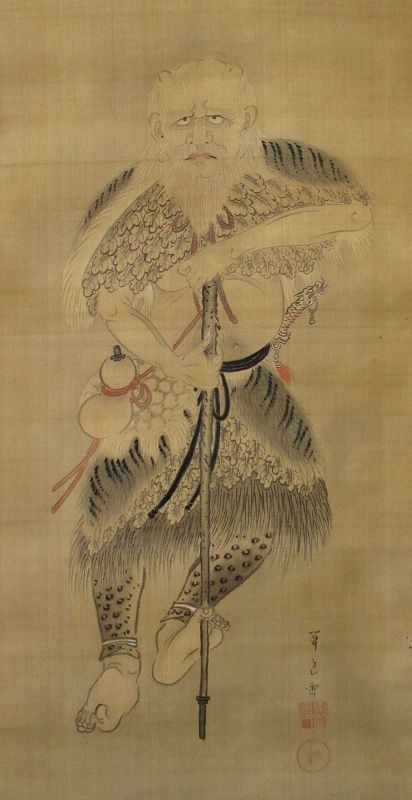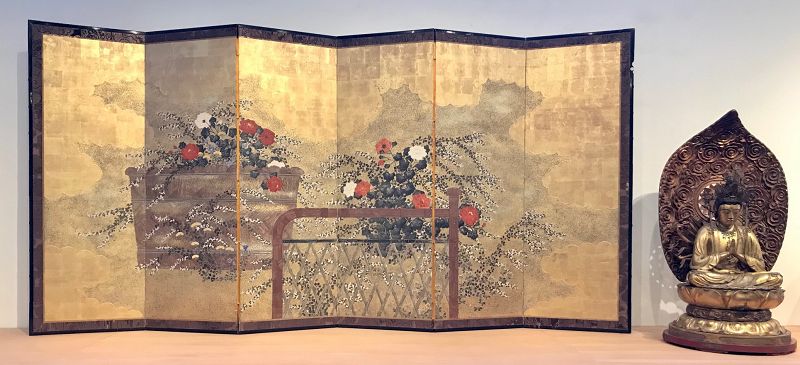Japanese Edo Period scroll painting of a yamabushi, a mountain ascetic hermit or holy man. Often believed to be endowed with supernatural powers, the yamabusi follow the Shugendo doctrine, a religion that places heavy emphasis on feats of endurance. Throughout history, they have participated in battles along side samurai. In this painting, the warrior/sage is leaning on a walking stick. He is dressed only in leaves and animal skins. A hyotan gourd tokkuri flask hangs from a chord slung over one shoulder and the dragon shaped hilt of his katana is visible at his waist.
His hair is gray and his expression intense. Two subtle protuberances on top of his head give him an oni-like appearance. Painted in ink and light
mineral colors on silk, high quality materials with lacquer ends.
Signed 関良節 Seki Ryо̄setsu and with two seals:
東岳道人
三楽
Seki Ryо̄setsu was a mid-Edo painter who lived from 1703 to 1775.
His original names seems to have been: Kashiwada Sanai Fujiwara no Tokomaro (or Tsunemaro). He was originally a Shinto priest, but went to Edo and became a painter. He also is most likely associated with Kan'ei-ji Temple.
This scroll comes with it's original kiri wood tomobako. The writing on the box says:
関良節作
神皇之図
Roughly: "Work of Seki Ryо̄setsu. Picture of deity-emperor."
An example of his work can be seen in the Boston Museum of Fine Arts.
Dimensions: 67 1/2" high x 20" wide (17 1/2" wide not including rollers. Size of art: 35 1/2" high x 13 1/2" wide.
Yamabushi Scroll Painting by Seki Ryо̄setsu, Edo Period
$6,000.00
https://zentnercollection.com/product/yamabushi-scroll-painting-by-seki-ry%d0%besetsu-edo-period/


